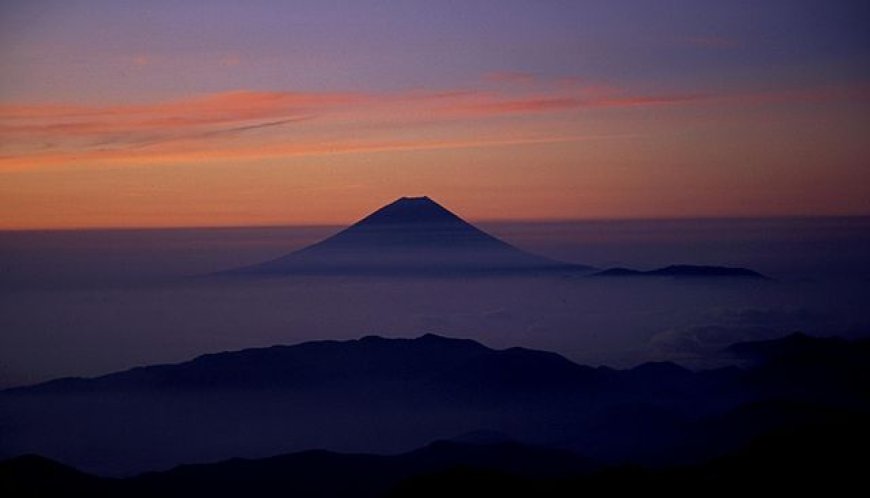Mount Fuji in Japan
When it comes to Japan, you will probably immediately think of the majestic and majestic Mount Fuji. Dubbed the highest mountain of the land of the rising sun, Mount Fuji is also a historical relic, a sacred symbol of every citizen here.

Japan's Mount Fuji was named one of the World Heritage Sites by UNESCO on June 22, 2013. According to UNESCO, it has inspired artists and poets and has been a pilgrimage destination in the past few years. past many centuries.
Mount Fuji - from legend to symbol of Japan
Fuji is currently an active volcano, with a snow-capped year-round cone that has inspired Japanese artists and poets. Especially after 1600 when Edo (present-day Tokyo) became the capital of the country and people could see the mountain while traveling on the Tokaido route, the beauty of Fuji was even more praised, becoming more and more popular. prominent topics in domestic literary and painting works.
According to ancient records, the first person to climb to the top of the mountain was an anonymous monk in 663. It is said that, because the top of the mountain is a sacred place, women are not allowed to set foot. By the end of the Meiji period, this taboo no longer existed. Mount Fuji is also the traditional site of ancient warriors. Samurai warriors used to practice drunkenly at the foot of the mountain, near the present-day city of Gotemba.
In 1290, Nikko Shonin, a senior disciple of Nichiren and former chief priest of Kuonji Temple on Mount Minobu, built the Taiseki-ji temple complex at the foot of Mount Fuji. Taiseki-ji became the administrative and religious center of Nichiren Shoshu Buddhism. This place has attracted thousands of domestic and foreign tourists to visit and pilgrimage every year.
According to records, the first foreigner to climb Mount Fuji was Rutherford Alcock, the first British diplomat in Japan. Rutherfold Alcock first climbed the mountain in September 1868. It took him eight hours to climb from the foot of the mountain to the top, but only three hours to climb down to the bottom.
Thanks to his autobiography, the image of the majestic and majestic Mount Fuji is widely introduced in Western countries. The first foreign woman to successfully climb the mountain was Fanny Parkes, the wife of a British diplomat named Harry Parkes, in 1869. And in the same year, the famous Anglo-Italian photographer, Felix Beato, also set foot on the top of this mountain.
Today, Mount Fuji is not only a world-famous scenic spot, but it is also an ideal climbing place for those who want to conquer the peak. In the early 20th century, the great American educator Frederick Starr gave his famous lectures on the climbs of Mount Fuji in 1913, 1919 and 1923.
Interestingly, there is a Japanese saying that a wise person climbs Fuji only once in his life, and it is not only a fool who climbs it a second time.
--------------------------
Injavi.com - Visit in Japan



























































































